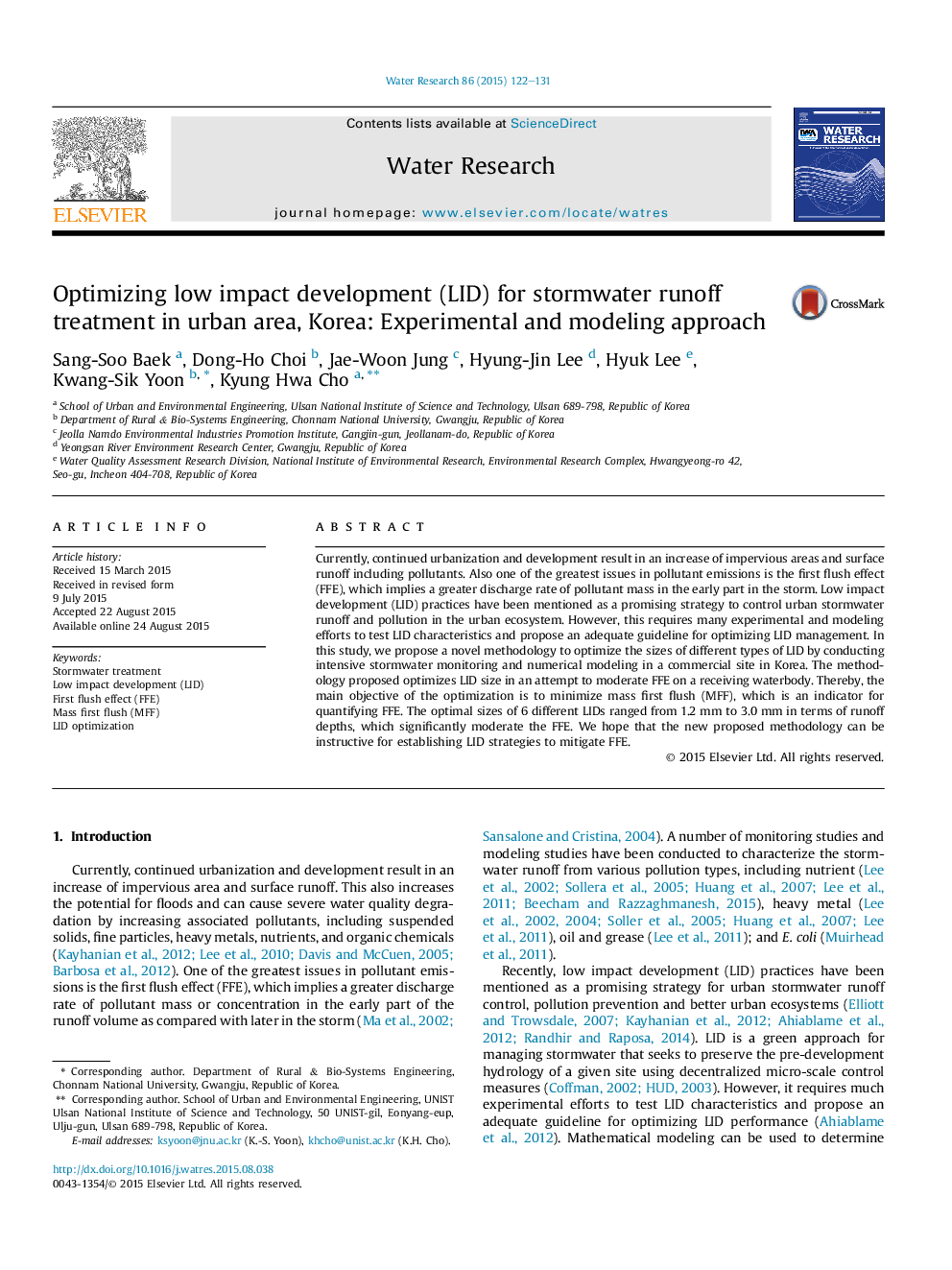| Article ID | Journal | Published Year | Pages | File Type |
|---|---|---|---|---|
| 6365651 | Water Research | 2015 | 10 Pages |
â¢We proposed a novel methodology to optimize LID so as to mitigate the first flush effect (FFE).â¢Stormwater monitoring and modeling were incorporated.â¢The goal of optimization is to minimize mass first flush (MFF), which is an indicator for quantifying FFE.â¢We hope that the new methodology may be helpful in the development of effective LID strategies.
Currently, continued urbanization and development result in an increase of impervious areas and surface runoff including pollutants. Also one of the greatest issues in pollutant emissions is the first flush effect (FFE), which implies a greater discharge rate of pollutant mass in the early part in the storm. Low impact development (LID) practices have been mentioned as a promising strategy to control urban stormwater runoff and pollution in the urban ecosystem. However, this requires many experimental and modeling efforts to test LID characteristics and propose an adequate guideline for optimizing LID management. In this study, we propose a novel methodology to optimize the sizes of different types of LID by conducting intensive stormwater monitoring and numerical modeling in a commercial site in Korea. The methodology proposed optimizes LID size in an attempt to moderate FFE on a receiving waterbody. Thereby, the main objective of the optimization is to minimize mass first flush (MFF), which is an indicator for quantifying FFE. The optimal sizes of 6 different LIDs ranged from 1.2Â mm to 3.0Â mm in terms of runoff depths, which significantly moderate the FFE. We hope that the new proposed methodology can be instructive for establishing LID strategies to mitigate FFE.
